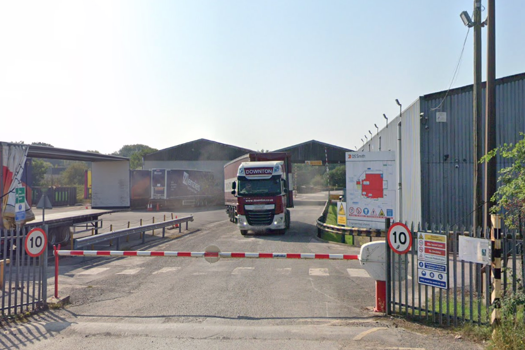An avalanche of transactional statements drop through our letterboxes on a monthly basis. Until recently, they were bland, functional documents - simple designs with black text spelling out the all important, and occasionally depressing, details. However, these dull versions of functional documents may soon be a thing of the past.
An increasing number of mailings now feature full-colour personalised messages from brands offering recipients lucrative promotions. You could argue that this kind of document, known as transpromo, is direct mail (DM) in disguise. However, unlike DM, its use is infrequent, despite predictions from some quarters that there would be a rapid uptake.
Several reasons have been mooted for this. Firstly, the recession has hit the financial sector particularly hard and investments in the type of printing and data technology needed to deliver transpromo documents have been put on hold as volumes drop. Another problem is the rise of online statements, with increasing numbers of customers opting to view their accounts via the internet. Some cite environmental considerations, but others have been offered financial incentives by their bank to switch to online statements.
As a result, you might think that digital press manufacturers, software providers and mailing specialists would want to steer clear of transpromo. But the reality is, they are as enthusiastic as ever and there is a feeling that once the economy begins to pick up, so too will colour transpromo.
Numerical evidence
The figures about transpromo's potential are compelling. According to Pitney Bowes, more than €2.8bn (£2.4bn) worth of possible advertising space on bills and statements is unused - the advertising value of this represents 24% of combined annual direct mail spend. Pitney Bowes also found that the UK market offers the greatest transpromo opportunities - it represents 50% of the total European credit card market.
Research by Infotrends, on behalf of HP, further backs up the view that a transactional document is a powerful tool for marketers. Around 90% of these types of documents are opened and read by consumers, compared to 7% of direct mail communications that are opened. It's also a document that requires maximum attention because it contains valuable information. DM can't claim the same draw.
"With transpromo, you can communicate on a truly one-to-one basis," says Gareth Parker, product manager for professional print products at Ricoh. "It's an intelligent and timely document and can lift response rates up to as high as 6%. That's way above the industry standard for DM."
Ricoh has been able to push into the transpromo market with the Pro C900 Series. The manufacturer's joint venture with IBM, InfoPrint, which gave birth to the 5000 digital inkjet colour press, has also helped it push into the transpromo market.
This month, InfoPrint unveiled a transpromo toolkit targeted at commercial printers. The toolkit has been designed to give printers ideas about transpromo and show them how to get started in the marketplace. One of the key features is a tool to calculate return on investment that shows the potential financial savings from replacing inserts and direct mail with personalised marketing messages on transactional documents.
"People spend more time looking at statements and invoices than DM pieces," says Clive Stringer, InfoPrint UK production sales manager. "Companies have picked up on the theory that transpromo is a development that makes the message more relevant to an individual."
Technological advances
It's a theory that most digital press manufacturers are pushing. Xerox, HP, Xeikon, Agfa, Kodak and a host of others have all brought out machines that have raised the bar in terms of quality and speed.
"Transpromo is all about colour," explains Screen UK managing director Brian Filler. "And there is no doubt that the faster the thing can go, the better. The three key drivers are delivery, delivery and delivery. Speed is of the utmost importance."
Such are the volumes involved, it's no surprise that manufacturers are attempting to push their digital presses to the limit - Filler says Screen is aiming to boost the 64m per minute Truepress Jet520 to 128m per minute.
"In the past, the biggest challenge to transpromo was the print technology," explains InfoPrint's Stringer. "We already had the data management and good document composition. But the hardware needed to run at a suitable speed and quality."
Stringer believes that the inkjet technology used in the 5000 ticks both these boxes. Toner-based digital presses, like the Xeikon 8000 and the Xerox 490/980, have also pushed the market forward with improved colour quality and speed.
However, Ian Allan, business unit director at Polestar Applied Solutions, says the colour quality formerly on offer didn't "tick the customer's creative boxes". At its Nottingham DM site, Polestar installed the Océ JetStream 2200, a 150m per minute inkjet machine that can be fitted with an additional fifth colour.
"That machine has changed our customer's perceptions," he says. "Customers we were not engaging with have now started to knock on our door. The JetStream can hit the higher number of volumes needed for that market."
GI Solutions is yet another printer that has invested in digital hardware, buying four Screen Truepress Jet450s. "All the talk is about digital variable colour," explains sales director Patrick Headley. "We are hopeful of gaining a major contract at the moment; the reason why we have a chance is that the incumbent printer can't do digital colour."
In these two cases, the investment in the new digital technology has attracted interest and is likely to get a few customers dipping their toe in the transpromo waters. But, as many in the market will admit, not many clients have jumped in completely.
"At the moment, the market hasn't moved fully into transpromo," adds Headley. "Given the financial environment, companies haven't been quick to move."
"I think it is fair to say we thought transpromo was going to move a lot faster, but we could not anticipate the economic climate," adds Filler. "It's not just in transpromo, but right across the industry."
The recession has undoubtedly had a negative impact on transpromo's up take, with many print firms reluctant to invest in new equipment at this moment in time. "Transpromo is not cheap," says InfoPrint's Stringer. "You need some heavy metal to do it."
Additional measures
Furthermore, a lot of time-consuming measures need to be put in place behind the scenes to make transpromo work, with companies effectively having to merge their marketing and transactional departments.
Then there's the threat of the internet. It's the same old story for the print industry, as in many other sectors, with online eating into its market. Industry observers acknowledge that online is having an effect on volumes, but they say it also offers opportunities for print firms. Polestar's Allan believes that it's where firms with multichannel capabilities can really come into their own.
"Companies can look for a single transpromo partner as opposed to having one for print, SMS, online and email," he says. "We think that we need to be part of a shift in the market and go beyond being just a commodity supplier to be more of a technology driven partner. It is an opportunity for the supplier to move further up the supply chain and get involved early on in a project."
The general view is that, while some transactional documents are migrating to the internet, many consumers still prefer to get their valuable financial details in paper format. Some argue that it is easier for people to refer to a printed statement, rather than firing up a computer and attempting to get onto the internet.
If that theory is proved to be true, then there are still plenty of opportunities for transpromo to progress in the UK. The technology is there and the statistics appear to back up the view that highly personalised marketing messages on transactional documents don't only bring about a healthy return on investment, they also boost response rates. The problem for the true believers of transpromo is judging exactly when the market will take the leap - if it ever does. It remains to be seen if this time next year we will all having full-colour bills and statements dropping through our letterboxes.
STATISTICS: TRANSPROMO
There are plenty of statistics used by digital press and software manufacturers to back up their view that transpromo is worth the investment. Kodak notes that for any personalised mailing to work, it needs to have timing, relevance and unique tailoring – 51% of consumers expect special offers and discounts when opening mail. Kodak also points out that more time is spent looking at bills and statements compared to other forms of communication, such as TV advertising, direct mail and SMS.
In 2008, Infotrends was commissioned by HP to look into the transpromo market. It revealed that 36% of transaction documents contain digitally printed marketing messages in the documents. Print firms believe that this will increase by 50% before 2010.
US-based healthcare firm Humana attached personalised promotions on its transactional statements. Usually these promotions had a redemption rate of 1.5%, but with transpromo the figure had risen to 3%. Also, the company found that there was a 17% increase in loyalty.









